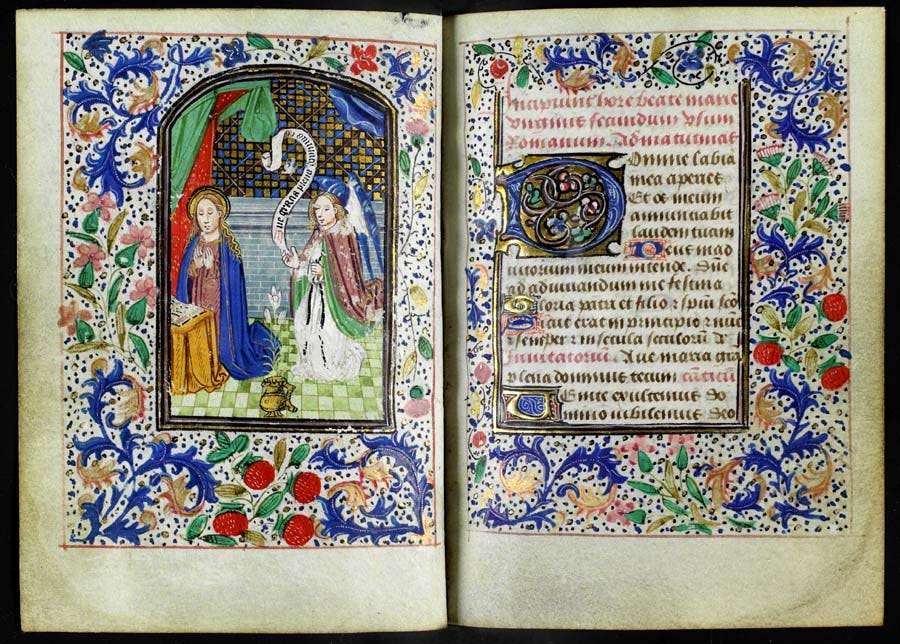After Whitsuntide the church enters Ordinary Time.This is the period from Pentecost to Advent during which, Sundays are counted by ordinal numbers. The first Sunday after Pentecost is Trinity Sunday and the Sunday before Advent is Christ the King Sunday. There are a good few Sundays in between – this is Ordinary Time. There is human tendency to focus on celebrations. In the liturgical year these are feast days, commemorating historical events. We should not wish away the months when seeds grow and we can, weather permitting, enjoy the long, warm days of summer. Christians are baptised in the name of the Father, and of the Son, and of the Holy Spirit - the Trinity, meaning three-in-one. The image of the Trinity is often composed of a right hand, God the Father, a Lamb to symbolise Christ and a Dove for the Holy Spirit. The Trinity is central to the baptism of the Christian: I baptize you in the name of the Father (God), the Son (Jesus) and the Holy Spirit. (Matt 28 v16-20). The bible focuses on the number three: Jesus was tempted by the devil thrice, his ministry on Earth lasted three years and he rose from the dead, three days after his death and burial. Peter denied Jesus thrice and there were three wise men bearing three gifts. The number three is a mystical as well as a spiritual number. Fairy tales feature: Three Little Pigs, Goldilocks visited Three Bears and we read of Three Billy Goats Gruff. Macbeth uses the number three to demonstrate unlucky Trinity , for example the three witches – Double, double toil and trouble, fire burn and cauldron bubble. Superstition surrounds the number three: Three is a Crowd, Bad Luck Comes in Threes, but of course some may quip that Third Time Lucky contradicts three’s bad luck run. Three isn’t alone, ill luck is also associated with the number thirteen. For the Christian, this is associated with the presence of Judas at the Last Supper on Maundy Thursday. A Simnel cake is decorated with twelve not thirteen balls of marzipan. Judas is omitted.

To return to the number three. The Trinity is the three coequal parts in one God Head. Number three is used copiously throughout the bible, both in the Old and New Testament, but for the Christian its most important use is in the resurrection of Jesus on the third day. The Trinity is the basis of the Christian faith. Three is a significant number representing divine wholeness and completeness.
Local Feasts of Devotion increased in the Middle Ages when one of the most popular books of this era was The Book of Hours. Written in Latin, the text was designed for use by laity between about 1250 and 1700. It was a private worship aid containing: texts, set prayers, a calendar of holy days and psalms. Some prayers were written in middle French. Perhaps we could do with a best seller prayer book for ordinal Sundays in Trinity. The highly illustrated Book of Hours varied in size, but it provided the reader with structure: prayers to be read at set hours of the day and night. There were prayers for mourning, plague, travel, weather (avoiding bad, obviously) and it became a useful teaching tool, too. Each book was custom made so that the liturgical calendar, feast days and solemnities were of significance to its owner. The central text was the Hours of the Virgin. Devotion to the Virgin Mary was a key focus point during the Medieval period. A set of eight prayers at regular intervals over a twenty four hour period enabled the user to pray at the same times as those following monastic life. The Book of Hours provided discipline and rigour. Other Hours included extracts from the Four Gospels, The Hours of the Holy Cross, The Hours of The Holy Spirit, The Hours of The Passion or a set of hours devoted to a particular Saint. Important liturgical days were written in red. This gave rise to the term Red Letter Day. The Book of Hours adapted monastic custom for lay folk going about their, dare I say dull, daily routines. Each book contained something of the owner’s personality, work and home. Family birthdays could be added. The more lavish, handmade Book of Hours, included exquisite, ornate pictures showing seasonal events : sowing and harvesting, the changing seasons and the Birthdays of the Saints. For example, Saint Margaret helped with sheep and childbirth. Saintly midwifery. The Feast Days were an integral part of a calendar that shaped daily life by providing spiritual sustenance and education. The Book Of Hours’ text also offered an opportunity for literacy from child to adulthood. This far from dull Illuminated book reached out to ordinary people. Trinity Sunday also provides a time for personal devotion. Ordinary time is for personal reflection in the day to day rhythm of living.
Trinity Sunday shouts loudly - number three, but my research threw up no Trinity Sunday recipes. Neapolitan ice cream which includes the trio of chocolate strawberry and vanilla fits the menu and may suit the time strapped cook! Tricolour pasta is another easy ingredient to use. The basic ingredients of Lebanese cuisine are: garlic, lemon juice and olive oil. Pop all three in a jam jar and shake well for a
Trinity Sunday Salad Dressing.
Juice small lemon
6 tbsps oliveoil
Finely diced clove garlic (to taste)
.
The Seaweed cook is indeed fortunate because seaweed comes in three colours, but sadly there is a downside – seaweeds are kitchen chameleons. Red and brown seaweeds turn green when cooked and so the green species is the uncontested winner. A Mexican Birthday style cake called Tres Leches unsurprisingly contains a trio of milks: condensed, evaporated and milk; these ingredients can lend themselves to Trinity Sunday.
Sea Pink & Sorrel Syrup – an original recipe for Trinity Sunday using three ingredients (& water)
Makes one small bottle
200ml water
200g granulated sugar
2 handfuls of sea pinks
6 sorrel leaves, shredded Add more for a lemony kick
Enjoy a walk at the seaside and pick your sea pinks. Breathe in slowly and smell the flowers - honey. With any luck there will be some wild sorrel growing nearby. Open your eyes - look in rock cubbyholes as well as on the cliffs. The young sorrel leaves that I picked were out of sight to the passerby. Nature is clever. The sorrel leaves were vibrant green and succulent. Not a trace of seaside wind burn. The foraging experience is good for the soul.
In the kitchen pop the water and sugar into a pan and heat over a low heat to dissolve the sugar. Don’t hurry this process.
When the sugar has dissolve add the sea pinks (also called Thrift) and sorrel. Leave to steep until the syrup is cold.
Strain into a small bottle and use within a week.
Dilute to taste with sparking or still water.
.









Always a red letter day when these are published! (For those of us in need of a lemony kick - water infused with a holy trinity is a very good idea.)
😀